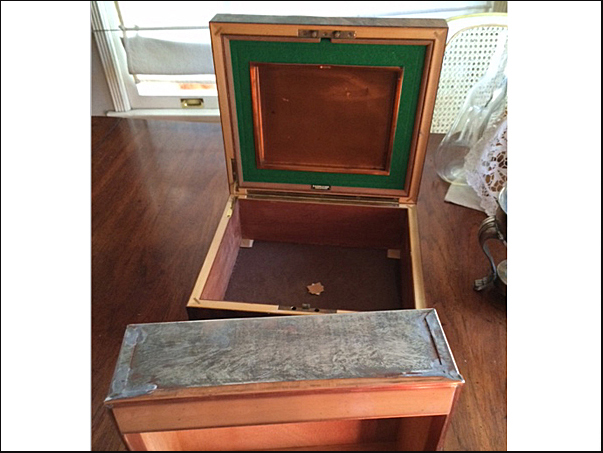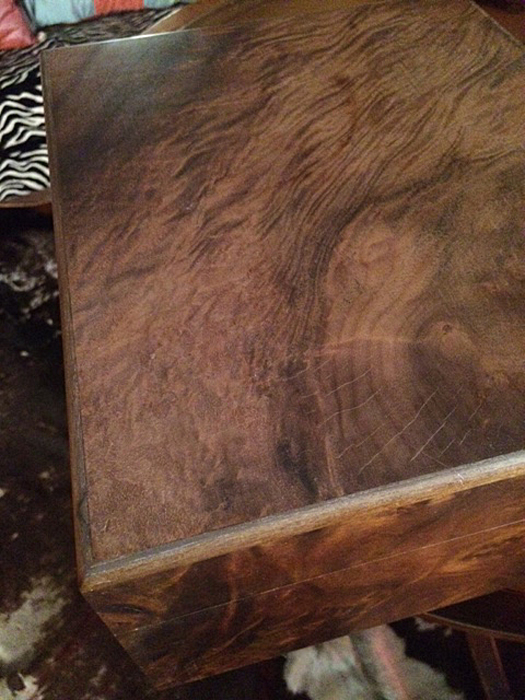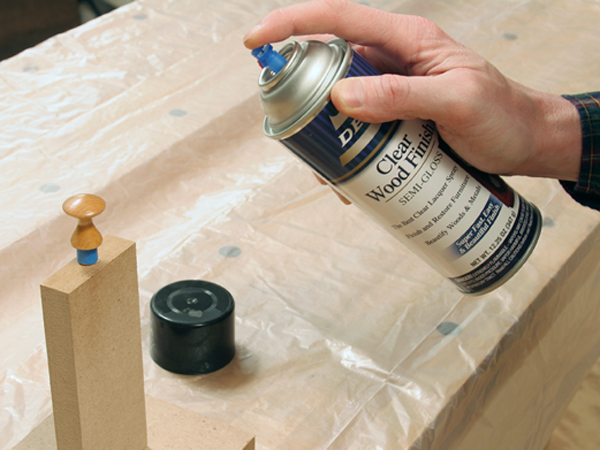
I enjoy woodworking and normally have great success … except with the finishing part of the project. While building and finishing an arbor may not be difficult for me, finishing a small box, such as a humidor, is a challenge.
I recently purchased a 40-year-old small Dunhill humidor. The finish on the veneer showed signs of aging and discoloration (yellowing) and even some micro cracks, and it generally had lost its luster. Without knowing what the finish is, I attempted to restore it a little by polishing it. I used the “Mother’s Headlight Restoration Kit,” which is intended to restore the clear luster on car headlights. Using four wet-sanding pads (800-, 1,000-, 1,500- and 2,000-grit), I wet-sanded it carefully and then buffed it with the paste and pad that mounts on a drill. The water from the sanding pads became dark brown from the sanded residue.
The box now looks a lot more uniform with less signs of aging. It is smooth to the touch but has lost any luster it still had. After reading an article on French polishing in the October 2014 print issue of Woodworker’s Journal (“Finishing Thoughts,” page 66), it made me wonder if that is the best method to follow for refinishing it? – Raymond Joubran
Tim Inman: Although much of our trade as fine furniture finishers can be traced back to the practice of the carriage makers and painters of the old days, those carriages were mostly wood and not metal. Finishing wooden furniture is an entirely different animal than finishing metal, as in auto finishing. I think this might be the root of your frustration. The finish chemistry is not that much different, but the substrate is not even close. Wood swells and shrinks slowly. It collects and gives off moisture. It is porous and textured with fibers. Metal swells and shrinks fast. It does not have moisture issues. The surface is pretty much nonporous. Long story shorter, using metal finishing practices on wood is pretty much a guaranteed fail.
French polishing is more a historic novelty than a desirable finishing practice today. For conservators and high-end restorers, being able to understand and perform a quality French polish is very important. For the rest of us, though, French polishing is a little like being told we can’t use electricity or saws with motors in our wood shops. Time has improved the equipment we use. The chemists have also improved the finishes we have available. Shellac, the historic choice for finishing resin in French polishing, is not the most durable of finishes. It is certainly not the best choice where moisture is concerned. There is absolutely no finish that can surpass the feel and look of the best French polish, but there are many modern finishes that come close. Almost all the modern finishes are easier to apply and succeed with than French polish. So, for now, let’s ditch the idea of French polishing. Move on to a sprayed furniture lacquer or nice varnish.
There are a number of books available which will guide you through the steps of fine furniture finishing. I would suggest you read through two or three different authors and compare notes. We all have our “best” ways. You’ll quickly find that there is a core thread that weaves through us all, though. Go for the basics. Go for fine furniture finishing. Remember that fine furniture finishing is both a skill and an art. Be patient with yourself as you learn. It is worth it! And remember also, “Perfect is the enemy of good.”
Chris Marshall: I would never claim to be qualified as a “fine” finisher either, Raymond, and with that said, I’d love to make a topcoat suggestion for your humidor: Deft® Satin Spray Lacquer in a rattle can. Over and over again, I’ve been thrilled with the results of Deft on small projects. It simple to apply, and every coat “burns” in to the layer below it so it levels out beautifully. It cures lightning fast and provides a buttery-smooth feel with only a light de-nibbing required after the first coat. It is volatile and produces vapors during application that you don’t want to breathe for long (apply it in a well-ventilated area), but it is dependable and super easy. And, likely as not, it will deliver a final finish that will surpass your expectations without any application challenges. Give it a try on a sample of some sort. I bet you’ll like it, too. And as I suggest, buy the Deft brand specifically. Good luck with your humidor.







